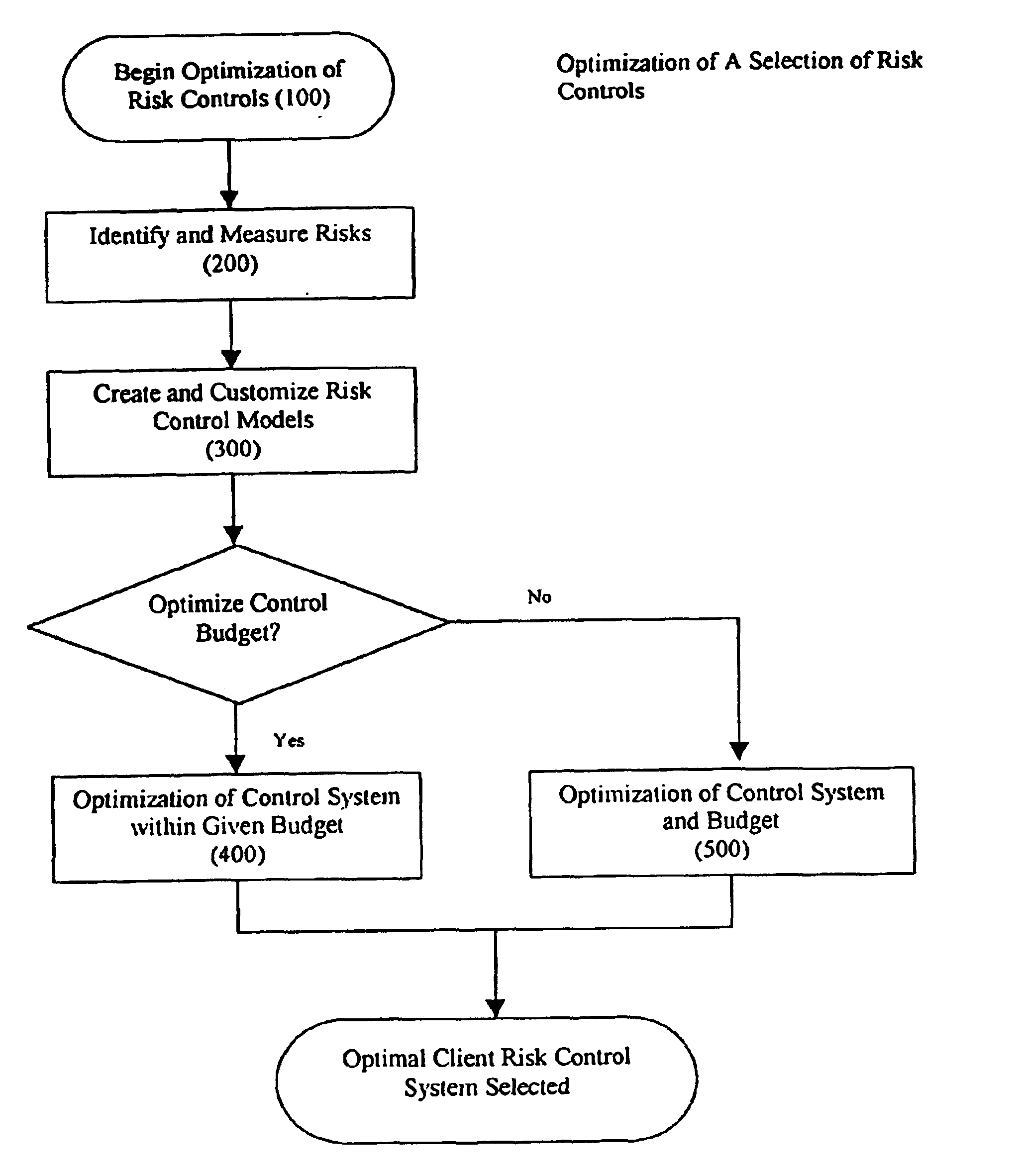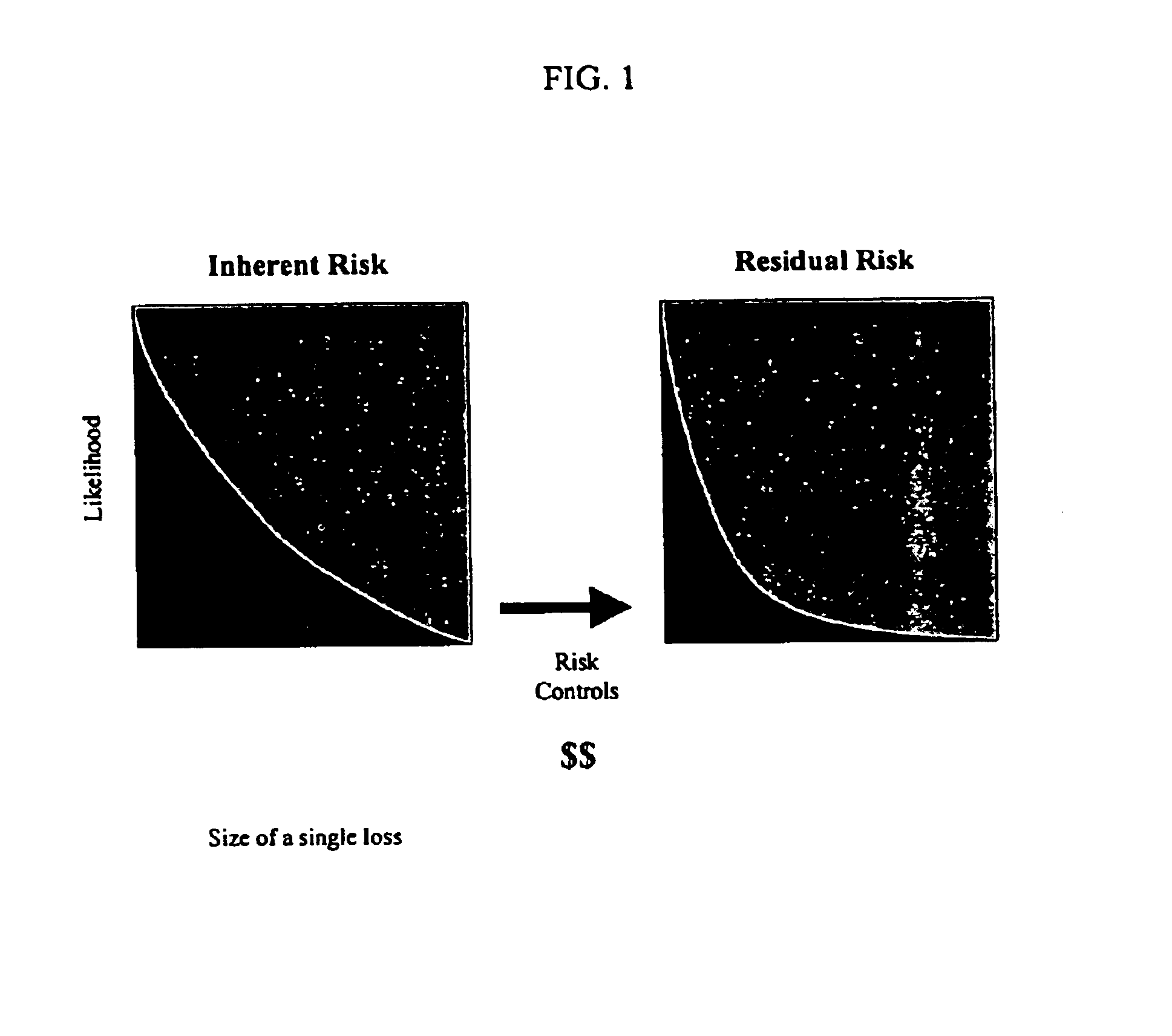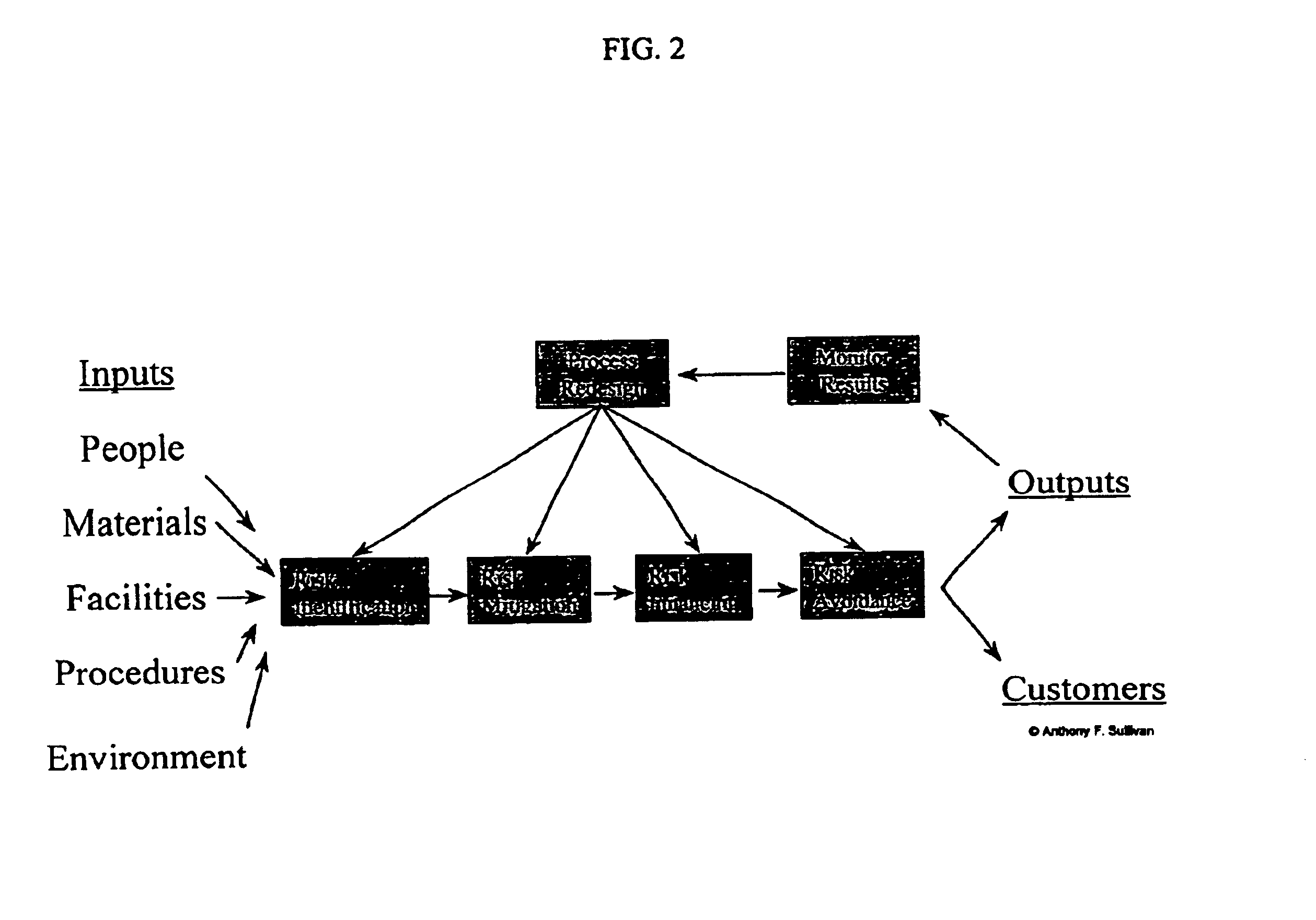Method and system for risk control optimization
a risk control and optimization technology, applied in the field of method and system for risk control optimization, can solve the problems of risk creation by underlying hazards, limited resources, and risk control associated costs, and achieve the effect of optimizing economic value added and efficiently allocating organizational resources
- Summary
- Abstract
- Description
- Claims
- Application Information
AI Technical Summary
Benefits of technology
Problems solved by technology
Method used
Image
Examples
example # 1
EXAMPLE #1
Economic Value Added of Changes to a Safety System
As an example consider a change in work layout and the addition of lift tables to control a material handling risk on an assembly line.
If the assembly line generates $10,000,000 in sales per year.
Operating profit is $500,000.
Materials and Supplies cost $4,500,000.
Labor costs are $3,500,000. Safety Risk Costs are $500,000.
Other GA&O are $1,000,000.
The corporate tax rate is 0.38 and the cost of capital rate is 0.095
The work layout redesign and lift tables have a capital cost of $200,000 and an expected lifetime of five years. $40,000 in annual depreciation and CCsis=$200,000×0.095=$19,000 (cost of capital of the improvements).
There is an 80% probability that the safety improvements will reduce the safety risks costs by $200,000 per year, resulting in a $160,000 reduction in exposure (Probability of Success×Risk Costs=0.80*200,000).
In addition we expect a 5% reduction in labor cost because of the improved layout and ease of ha...
PUM
 Login to View More
Login to View More Abstract
Description
Claims
Application Information
 Login to View More
Login to View More - R&D
- Intellectual Property
- Life Sciences
- Materials
- Tech Scout
- Unparalleled Data Quality
- Higher Quality Content
- 60% Fewer Hallucinations
Browse by: Latest US Patents, China's latest patents, Technical Efficacy Thesaurus, Application Domain, Technology Topic, Popular Technical Reports.
© 2025 PatSnap. All rights reserved.Legal|Privacy policy|Modern Slavery Act Transparency Statement|Sitemap|About US| Contact US: help@patsnap.com



